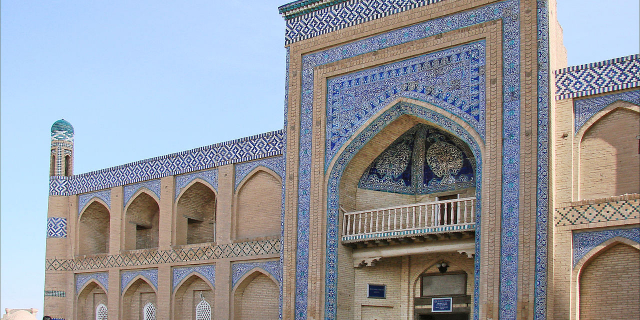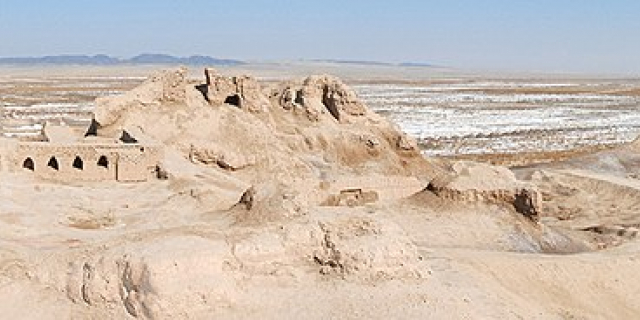Khiva
Khiva (Uzbek: Xiva, Хива, خیوه; Persian: خیوه, Xīveh; alternative or historical names include Orgunje, Kheeva, Khorasam, Khoresm, Khwarezm, Khwarizm, Khwarazm, Chorezm, Arabic: خوارزم and Persian: خوارزم) is a district-level city of approximately 93,000 people in Khorazm Region, Uzbekistan. According to archaeological data, the city was established around 1500 years ago. It is the former capital of Khwarezmia, the Khanate of Khiva, and the Khorezm People's Soviet Republic. Itchan Kala in Khiva was the first site ...Read more
Khiva (Uzbek: Xiva, Хива, خیوه; Persian: خیوه, Xīveh; alternative or historical names include Orgunje, Kheeva, Khorasam, Khoresm, Khwarezm, Khwarizm, Khwarazm, Chorezm, Arabic: خوارزم and Persian: خوارزم) is a district-level city of approximately 93,000 people in Khorazm Region, Uzbekistan. According to archaeological data, the city was established around 1500 years ago. It is the former capital of Khwarezmia, the Khanate of Khiva, and the Khorezm People's Soviet Republic. Itchan Kala in Khiva was the first site in Uzbekistan to be inscribed on the World Heritage List (1991). The astronomer, historian and polymath, Al-Biruni (973–1048 CE) was born in either Khiva or the nearby city of Kath.
In the early part of its history, the Aryan inhabitants spoke an Eastern Iranian language called Khwarezmian. Turks replaced the Iranian ruling class in the 10th century AD, and the region gradually turned into an area with a majority of Turkic speakers.
Russia annexed the Khanate of Khiva in the 19th century. The last khan from the ruling dynasty was liquidated a century later, in 1919. Thus Khiva became the capital city of the new Khorezm People's Soviet Republic. The Khorezm oasis was converted into a part of modern Uzbekistan and Turkmenistan in 1924.[1]
The earliest records of the city of Khiva appear in Muslim travel accounts from the 10th century although archaeological evidence indicates habitation in the 6th century; by the early 17th century, Khiva had become the capital of the Khanate of Khiva.[2] The khanate was ruled by a branch of the Astrakhans, a Genghisid dynasty.
 2014 Image of Palvan Gate Of Khiva, built in the early 19th century and known to have hosted large slave market and a center of punishments and executions
2014 Image of Palvan Gate Of Khiva, built in the early 19th century and known to have hosted large slave market and a center of punishments and executionsIn the 17th century, Khiva began to develop as a slave market. During the first half of the 19th century, around 30,000 Persians and an unknown number of Russians, were enslaved there before being sold. A large part of them were involved in the construction of buildings in the walled Itchan Kala.[2]
CampaignsIn the course of the Russian conquest of Central Asia, in 1873 the Russian General Konstantin von Kaufman launched an attack on the city of Khiva, which fell on 28 May 1873. Although the Russian Empire controlled the Khanate, it allowed Khiva to remain as a nominally quasi-independent protectorate.
Following the Bolshevik seizure of power in Russia after the October Revolution of 1917, a short-lived (1920-1924) Khorezm People's Soviet Republic formed out of the territory of the old Khanate of Khiva before its incorporation into the USSR in 1924. The city of Khiva became part of the Uzbek Soviet Socialist Republic.





























Add new comment